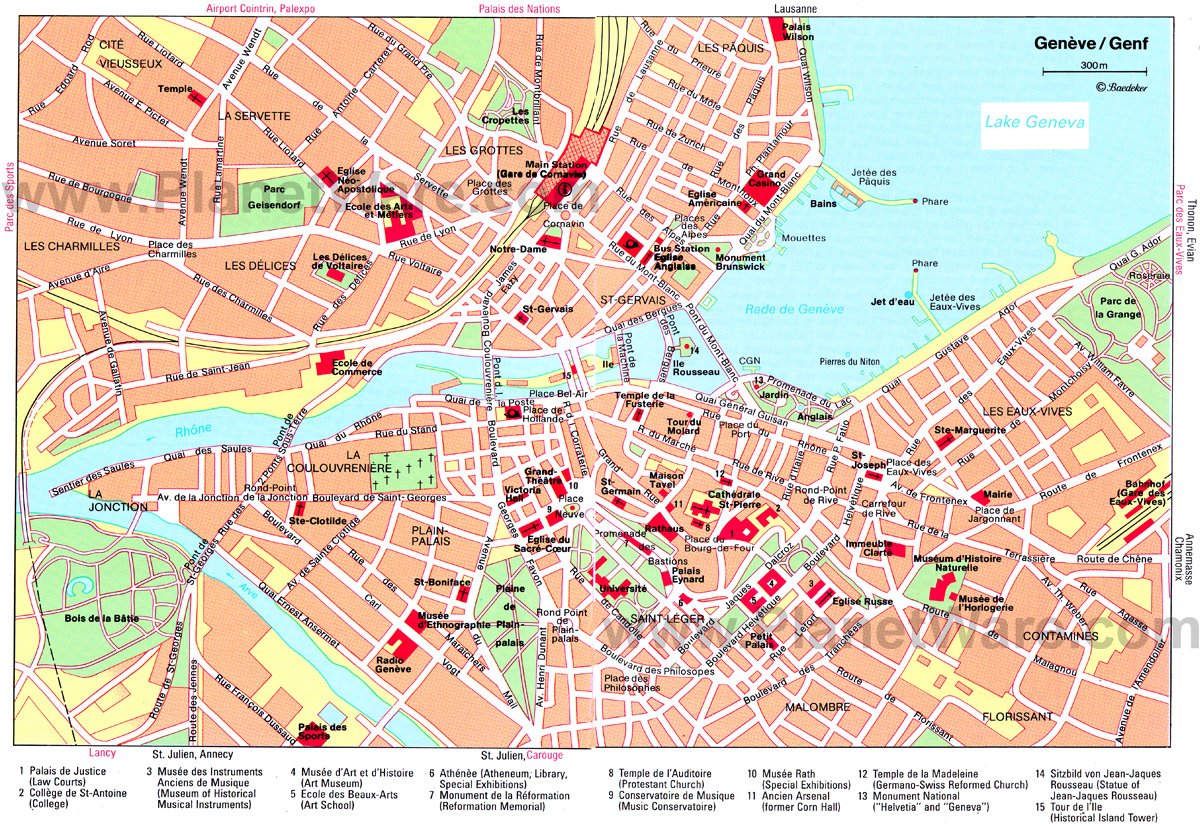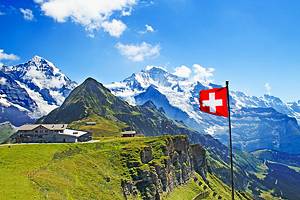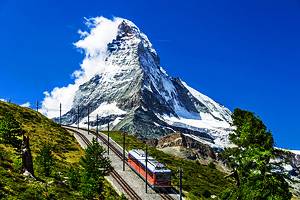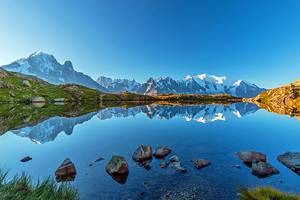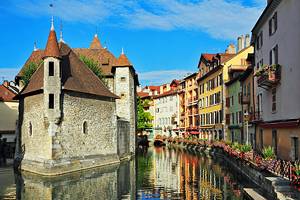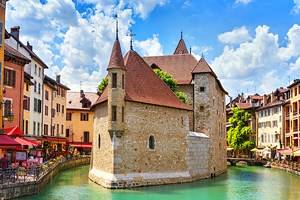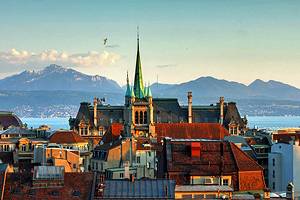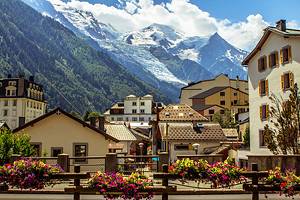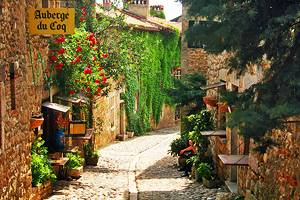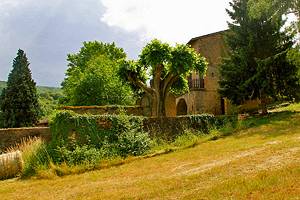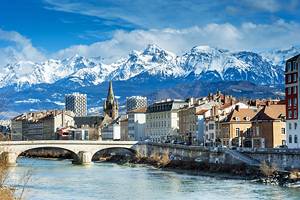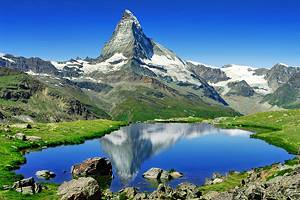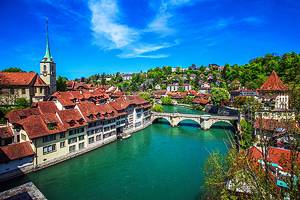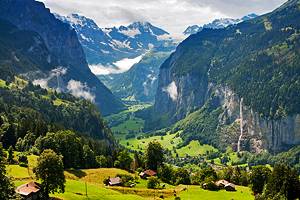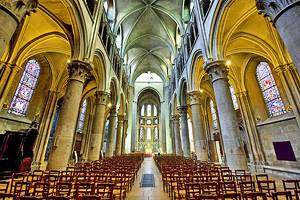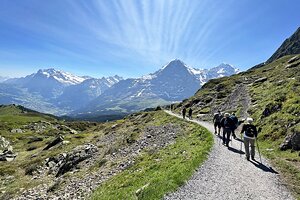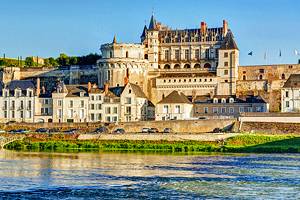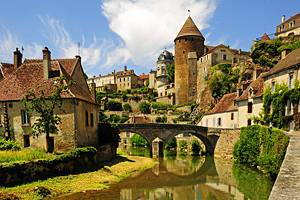Attractions & Things to Do in Geneva
The city of Geneva may seem more French than Swiss, not surprising, since this corner of Switzerland is almost completely surrounded by France. While it may be surprising that a center for world banking and diplomacy would have so many attractions for tourists, you'll find plenty of things to do in Geneva.
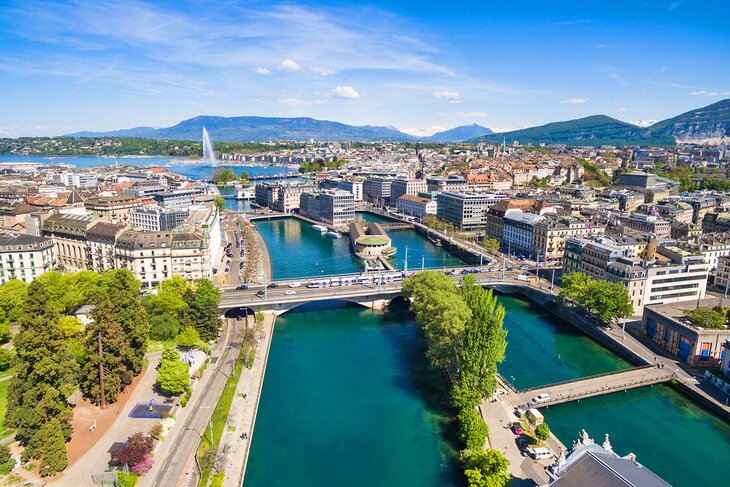
Lake Geneva (Lac Leman) gives the city a waterfront, complete with a promenade, places to swim, access to lake tours, and even a water shuttle connecting different parts of the city. The lakefront, along which you'll find many of Geneva's attractions, is lined with elegant parks and gardens.
Behind this, the old town rises above the Rhone River, and its picturesque old streets and flights of steps are dominated by the cathedral. Geneva's international and commercial life provide some places to visit, as well, with the impressive Palais des Nations, a museum of the Red Cross, and the Patek Philippe Museum of watches and watchmaking.
You can be sure of finding the best places to go with our list of the top attractions and things to do in Geneva.
See Lake Geneva by Boat
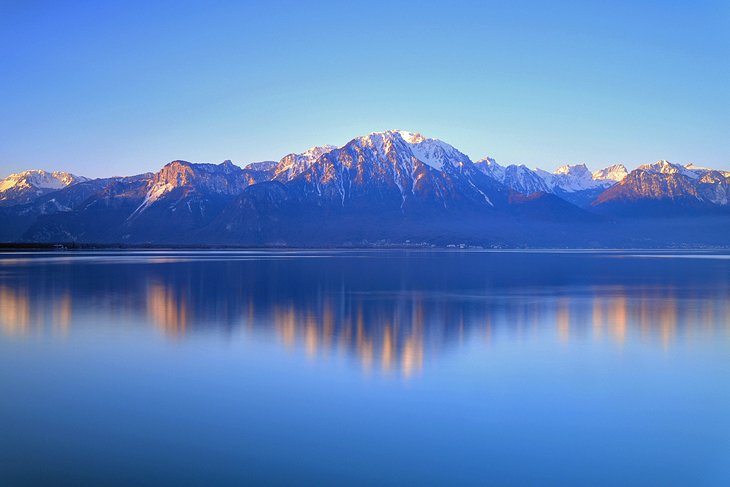
The lake is unquestionably the star of Geneva's show. It is the background for many of the loveliest city views and itself has the unmatched backdrop of snow-covered Alps.
You can get from one part of the city to another on its Mouettes Genevoises, motor-launches that have shuttled between lakeside quays since 1897.
Or you can explore the lake on one of the regular boats that connect Geneva with Lausanne, Montreux, and other lakeside towns, some of the most popular places to visit near Geneva. For a taste of lake travel of long ago, opt for a cruise on one of the historic paddle steamers, one of the most romantic things to do for couples. To get even closer to the lake, you can rent a paddleboard and take to the water.
Jet d'Eau (Water Jet)
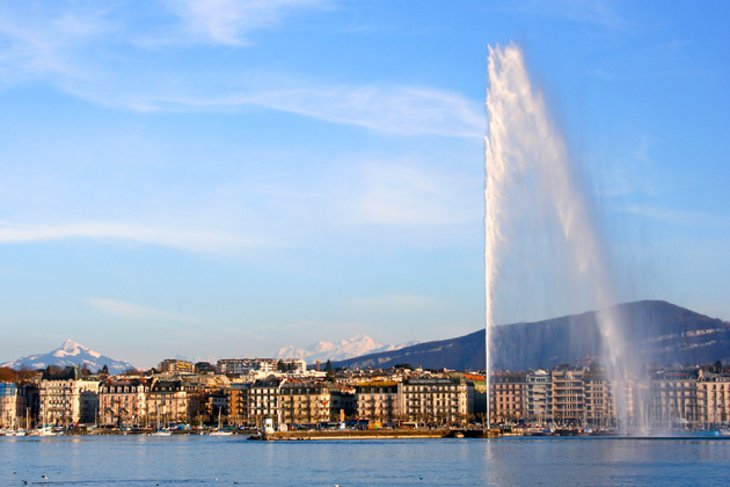
Beside the Jetée des Eaux-Vives, the breakwater enclosing Geneva's harbor, a mighty jet of water soars straight up from the lake surface in a 145-meter plume. This water jet has become the symbol of Geneva and is its most famous landmark. A powerful pump propels the water at a rate of about 500 liters a second, which accounts for the height it reaches.
A good viewpoint is from the Bains des Pâquis, a favorite spot for locals to swim, enjoy a sauna, or have a bite in a café.
Temple de Saint-Pierre
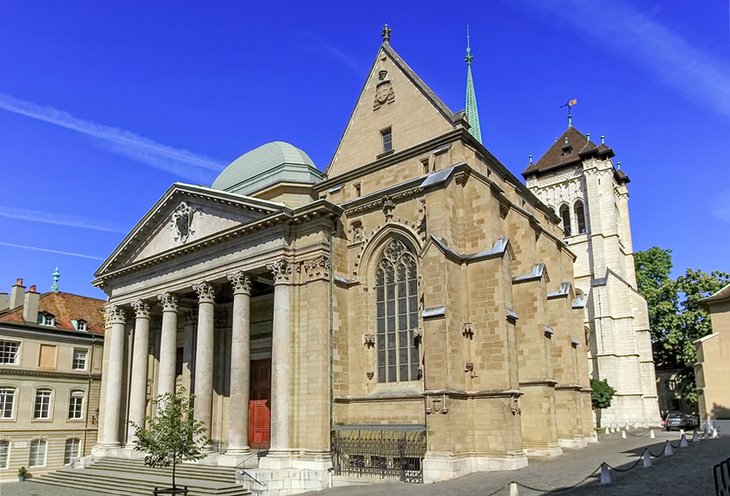
Dating back to 1150 as the Cathedral of Saint-Pierre, the Romanesque church at the highest point of Geneva's old town features some Gothic elements. During the Protestant Reformation, in which Geneva played an important role, the name was changed to Temple de Saint-Pierre and it became a protestant church.
John Calvin preached sermons here from 1536 to 1564, and his followers stripped out the altars, paintings, and statuary, leaving only the carved capitals and the stained glass from its original decoration.
The two principal towers, dating from the 13th century, were never completed. You can climb to the top for beautiful views of the lake and town, and a corridor connecting the two towers makes it possible to ascend both without having to return to ground level.
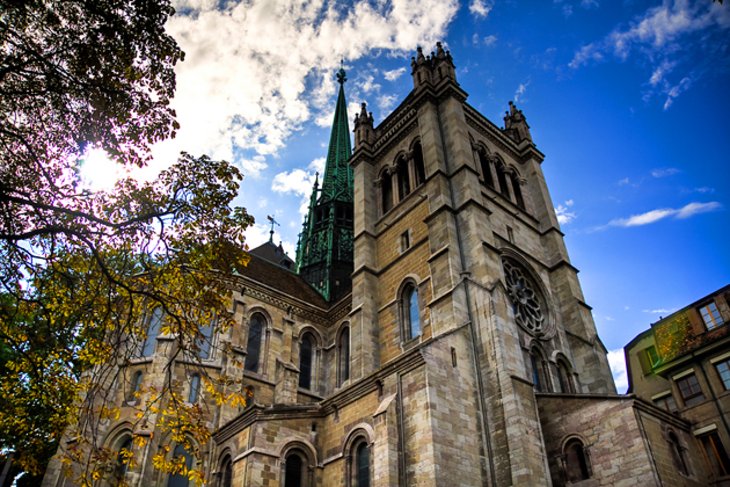
The metal spire over the crossing was built in 1895, replacing a tower destroyed by fire in the 15th century. The original west front and doorway were replaced in 1749-56 by a portico of six Corinthian columns, which is not at all harmonious with the building's architecture but doesn't detract from the unity of the somewhat austere interior.
The galleried nave, with the aisles separated by massive clustered piers, ends in the 12th-century choir and semi-circular apse; the transepts are short and narrow. Be sure to notice the late Romanesque and early Gothic capitals in the nave, aisles, choir, and transepts for their workmanship and the variety of their themes.
The stained glass windows are copies of the 15th-century originals, now in the Musée d'Art et d'Histoire. Against the aisle walls, the fifth bay holds late Gothic choir stalls with delicate carving from the destroyed Chapelle des Florentins. In front of the last pillar of the north aisle is a triangular chair said to have been used by John Calvin.
Adjoining the southwest corner is the Chapelle des Macchabées, from 1406, a superb example of High Gothic religious architecture, with beautiful window traceries. Archaeological excavations below the church reveal an extensive underground labyrinth from the early Christian settlement on the hill, including Roman mosaics and two 4th-century Christian sanctuaries.
Address: Cours St-Pierre 6, Geneva
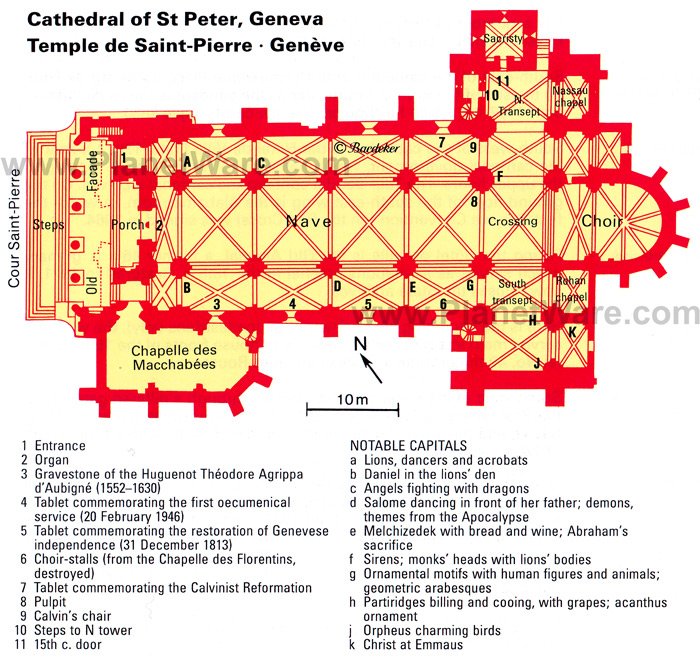
Stroll through the Jardin Anglais (English Garden) and Parc de la Grange
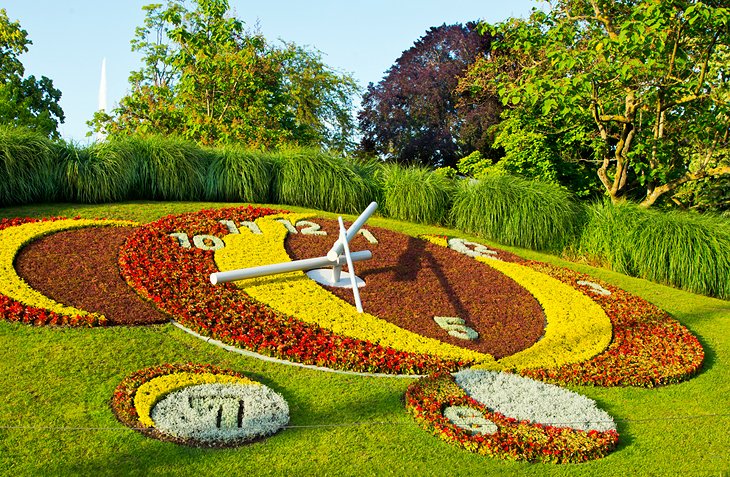
On the south side of the lake, known as the Rive Gauche, the Promenade du Lac runs east from the Pont du Mont-Blanc, flanked by the Jardin Anglais, where you'll see the large flower clock, almost as emblematic of the city as the Jet d'Eau.
The clock, set on a slight slope for easier viewing, changes with the seasonal blooming plants that form its colorful face. Also in the park is the Monument National, with allegorical figures of Helvetia and Geneva, commemorating Geneva's entry into the Swiss Confederation in 1814.
Along the south lakeshore are the landscaped Parc de la Grange, with a beautiful rose-garden, and the Parc des Eaux-Vives, with stately trees and flower-beds.
Place du Bourg-de-Four
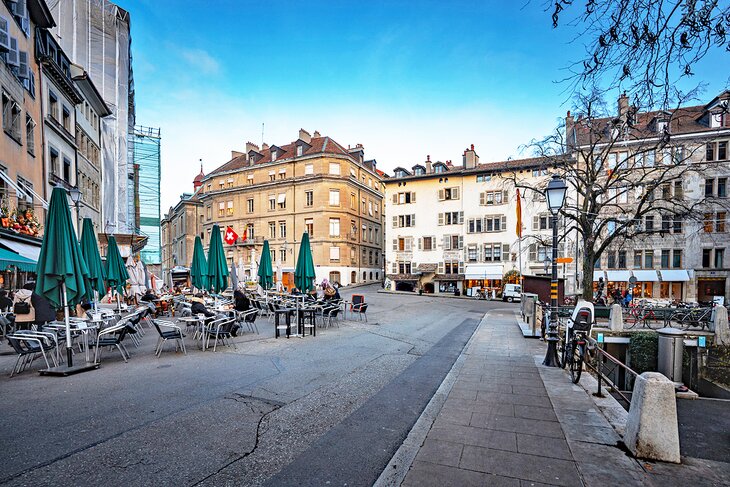
In the heart of Geneva's Old Town, near the Temple de Saint-Pierre, you'll find the popular Place du Bourg-de-Four. Possibly the oldest square in the city, and certainly its most charming and atmospheric, it is on the site of the Roman forum and held an important market from the ninth century onward. In the 16th century, exiled Protestants found shelter and refuge here.
Today, tourists and locals find refuge in its cafés and restaurants, many of which spill out onto the pavement in good weather. Along with an 18th-century fountain, a statue, Clementine by Heinz Schwarz, stands in the square. The Palais de Justice, which has housed the law courts since 1860 was built as a convent in the early 1700s.
Jardin Botanique (Botanical Gardens)
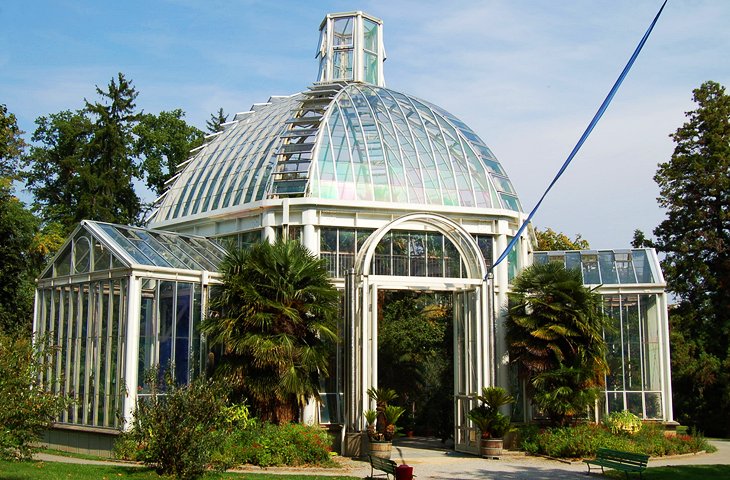
Southeast of the Ariana, between the Avenue de la Paix and the Chemin de l'Impératrice, you'll find Geneva's botanic garden, established in 1902 to replace a smaller one in the Parc des Bastions. Its greenhouses, gardens, and conservatory cover about 28 hectares and feature more than 12,000 species of plants and trees.
An Alpine Garden shows plants from Switzerland's high elevations, and the herbarium is one of the largest in the world, with six million examples. A small animal area includes fallow deer and other wildlife, a popular place to visit for families.
Address: 1 Chemin de l'Impératrice, Geneva
Palais des Nations
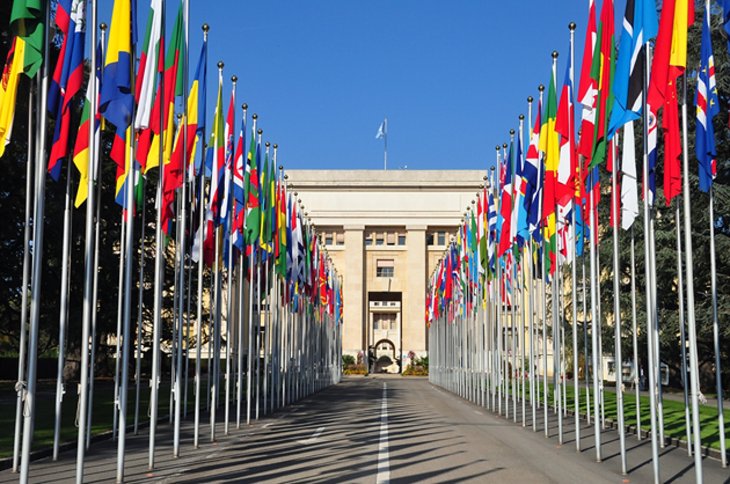
The large complex of marble buildings that make up the Palais des Nations is the European headquarters of the United Nations, a position it assumed after the demise of the League of Nations, whose world headquarters was here.
As such it has become a center of world diplomacy, the largest UN center after New York, with upwards of 25,000 delegates passing through annually. On a guided tour, you can learn about the work carried on here and see the artworks and interiors donated by countries all over the world.
The Assembly Hall, seating more than 2,000, is used for meetings of the United Nations and its associated organizations. From its lobby is a beautiful view of the Alps. The two heavily gilded bronze doors at the ends were brought back from Italy by Napoleon, and presented to the League of Nations by Clemenceau.
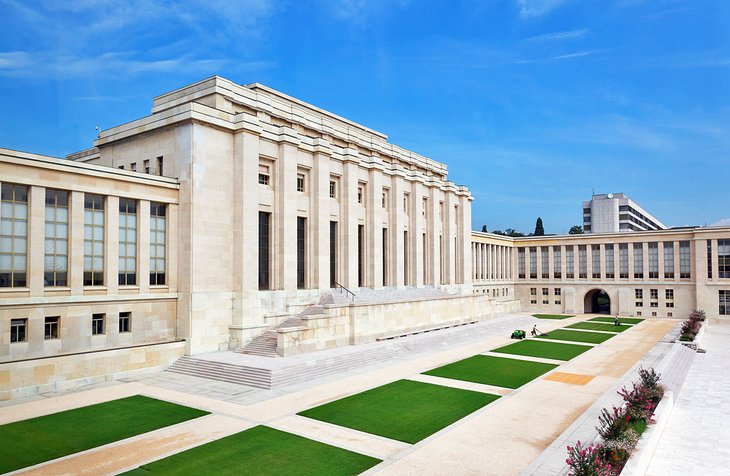
The wall and ceiling painting in sepia on gold by J. M. Sert in the smaller Council Chamber was a gift from Spain, completed in 1936, showing themes of technical, social, and medical progress and world peace. In the ante-chamber are three bas-reliefs by Eric Gill inspired by Michelangelo. The library contains more than a million print items as well as electronic journals and books.
Between the main wings is the Cour d'Honneur, a spacious terrace merging into the park, with a magnificent view of the lake and the Alps. In the middle is a bronze armillary sphere with gilded signs of the Zodiac by American sculptor Paul Manship.
Address: Avenue de la Paix 14, Geneva

Day Trip to Chamonix and Mont Blanc
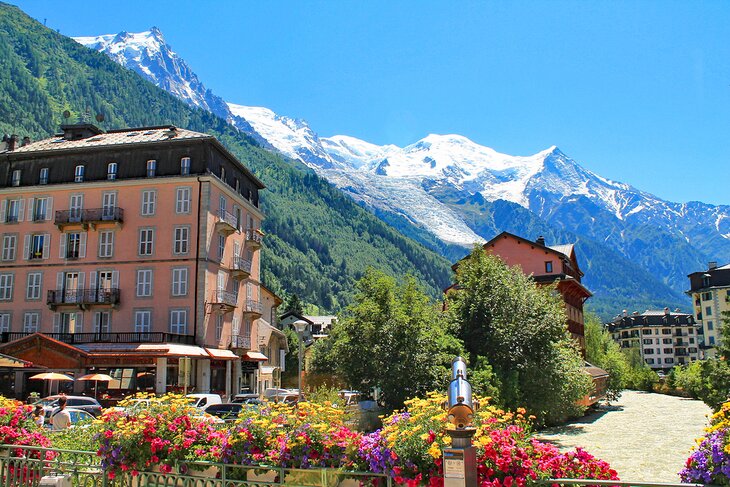
You can add another country to your travels on a day trip to the Alpine resort of Chamonix and Europe's tallest peak, Mont Blanc. Chamonix is best known as a chic French ski resort, but the rest of the year, it's also a center for climbers and hikers, as well as tourists.
Sightseeing opportunities in Chamonix-Mont-Blanc abound, whether you want to do a little climbing or walk on more gentle trails across Alpine pastures. You can ride one of several gondola lifts for even higher views, or ride the tramway to the Nid d'Aigle at 2,372 meters. A walking path leads from here to the Bionnassay glacier.
A historic red cog railway will take you from Chamonix to Montenvers, where you can see the famous Mer de Glace glacier.
Read More: From Geneva to Mont Blanc: Ways to Get There
Explore the Past at the Musée d'Art et d'Histoire (Art and History Museum)
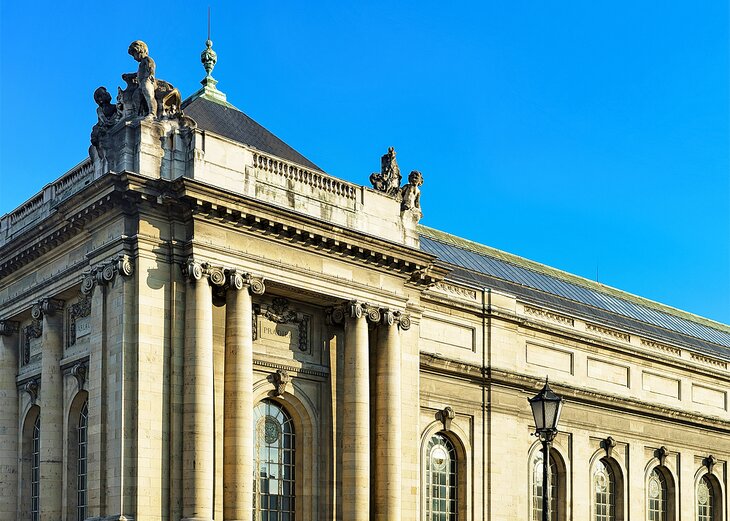
One of Switzerland's three largest museums, Geneva's Musée d'Art et d'Histoire owes its exceptional collections to the merger of several regional museums, with added donations from private collectors. The result covers the fields of applied and fine art and archaeology, with a collection of weapons, Greek and Roman art treasures, Middle Eastern and Eastern Mediterranean antiquities, Roman and Etruscan pottery, and Egyptian funerary art.
Archaeological finds and antiquities from Geneva and the surrounding area date back to the Paleolithic and the Iron Ages, extending through Roman and Gallo-Roman times to the Middle Ages. Various arts from Gothic and Renaissance periods are also displayed.
The fine art galleries include Italian, Flemish, and Swabian old masters and works by Flemish, Dutch, and French artists of the 16th to 18th centuries. Paintings by Geneva artists of the 18th and 19th centuries complete the collections.
Address: Rue Charles-Galland 2, Geneva
Monument de la Réformation and Parc des Bastions
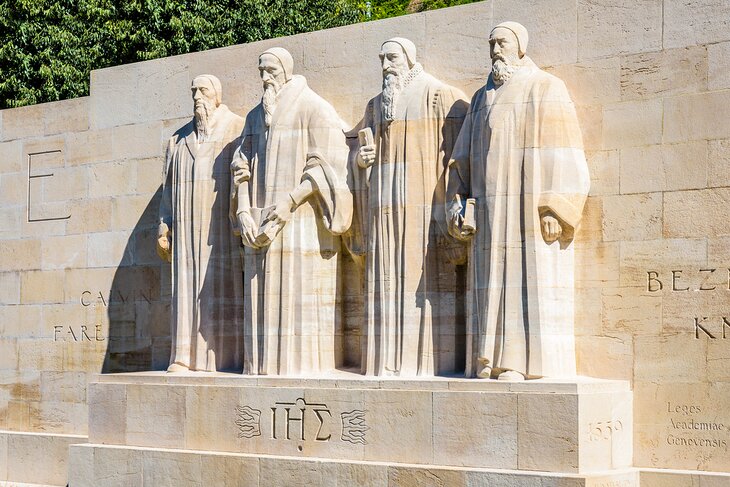
Through a pillared gateway southwest of Geneva's Hôtel de Ville, the Promenade de la Treille is lined with chestnut trees and offers views of Mont Salève and the Jura. Against the wall under the promenade, in the beautiful Parc des Bastions, stands the Reformation Monument, erected in 1917 in recognition of Geneva's leadership in the Protestant Reformation.
In the middle are figures of John Calvin, Guillaume Farel, Théodore de Bèze, and John Knox, prominent leaders of that movement. These are flanked by those of the statesmen who promoted the cause of reforming the church, along with bas-relief scenes from the history of the Calvinist movement. At the ends are memorials to Luther and Zwingli.
Address: Parc des Bastions, Geneva
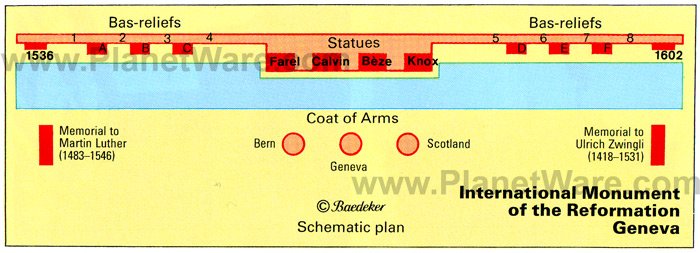
Patek Philippe Museum
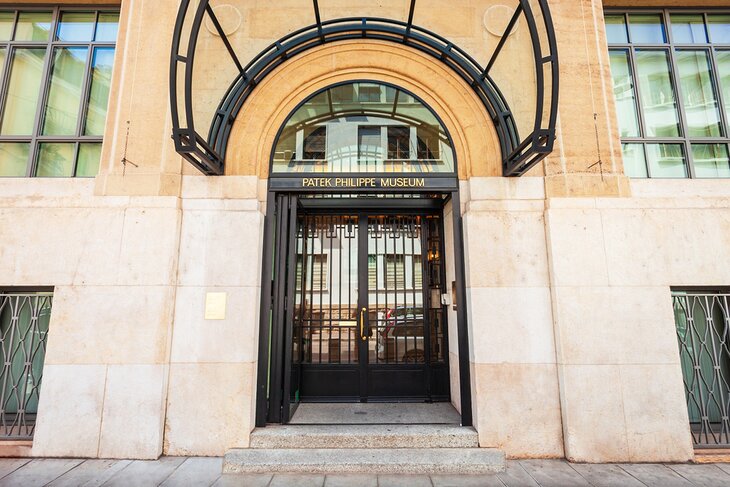
There's more to the Patek Philippe Museum than watches and watchmaking by this prestigious Geneva firm. Along with example than watches and watchmaking by this prestigious Geneva firm. Along with examples of the company's timepieces since its founding in 1839, the museum displays Swiss and other watches, automated musical devices, and portrait miniatures from the 16th to the 19th century.
The earliest watches here date from the 1500s, and those shown include enameled and technical watches, as well as those from China and Turkey dating from as early as 1600. Besides watches there is an outstanding collection of portrait miniatures from the 17th through 19th-centuries.
Address: Rue des Vieux-Grenadiers 7, Geneva
International Red Cross and Red Crescent Museum
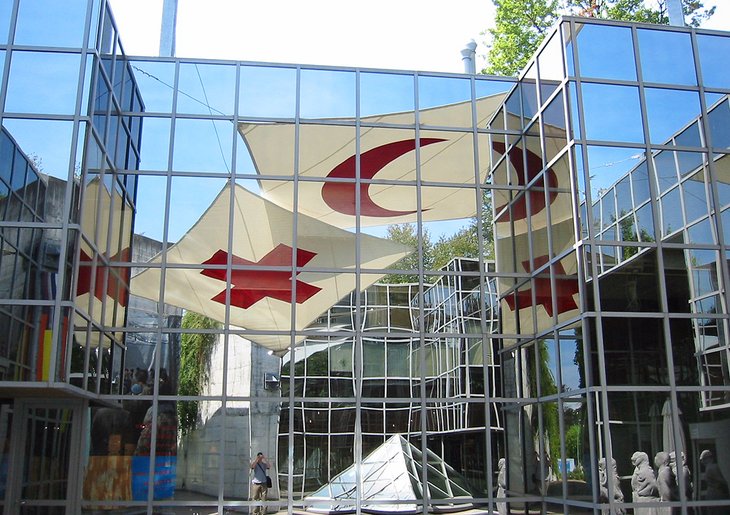
Although you'll find historic documents and artifacts displayed here, the International Red Cross and Red Crescent Museum is designed to bring visitors into the contemporary work and mission of the world's primary humanitarian aid organization. Through its well-designed and interactive exhibits, visitors discover not only the works of the Red Cross in the two World Wars and other conflicts, but how they are immersed in the contemporary crises the world faces today.
Three separate areas, under the title "The Humanitarian Adventure," explore three major challenges in today's world: Defending Human Dignity, Restoring Family Links, and Reducing Natural Risks. The exhibits are immersive, raising visitors' awareness by simulating the emotional experience of being part of a humanitarian crisis. A large interactive globe shows the latest developments from the field.
Address: Avenue de la Paix 17, Geneva
Ariana Museum
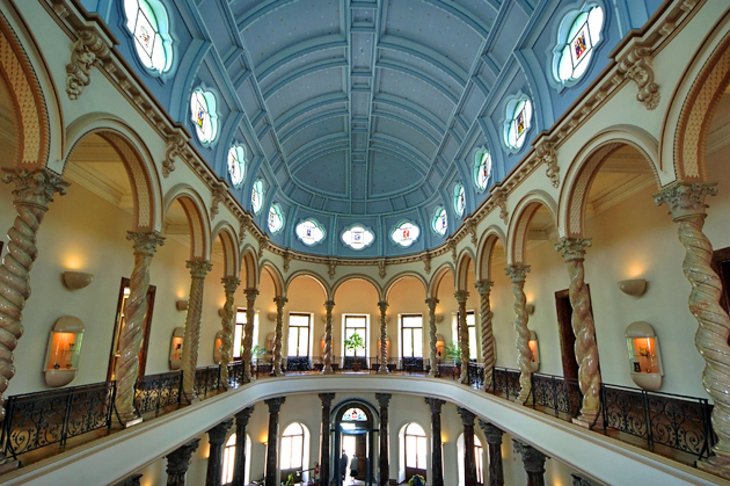
Near the Palais des Nations is this museum devoted entirely to ceramics and glass production with a collection of 25,000 examples from Switzerland, elsewhere in Europe, and the Middle and Far East. The objects shown illustrate the history of ceramic arts from the early Middle Ages through the 20th century, tracing both the ceramic formation and glazing processes.
The building in which these are displayed was built between 1877 and 1884 to house the private collections of its founder, Gustave Revilliod. He commissioned it to combine the Neoclassical and New Baroque architectural styles, and the result is an impressive gallery with a vaulted ceiling and colonnades. The museum is also the seat of the International Academy of Ceramics.
Address: Avenue de la Paix 10, CH-1202 Geneva
Day Trip to Evian-les-Bains
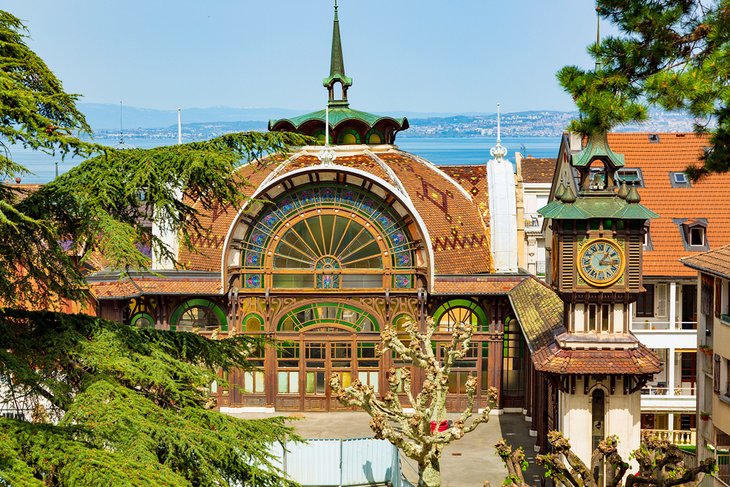
On the French southern shore of Lake Geneva, 25 miles from Geneva, Evian-les-Bains became a popular health resort because of its mineral-rich thermal springs and its beautiful setting backed by Alpine slopes.
Although its history reaches back to the Middle Ages — the church of Notre Dame de l'Assomption was built in the 13th century — Evian-les-Bains reached its height of popularity in the Belle Epoque.
The town retains its Art Nouveau buildings, including the historic Pump House with its tiled dome, stained glass, and ornate clock tower. The elegant Palais Lumière, built as a spa, hosts art exhibits and cultural events. The equally lavish Antoine Riboud Theater hosts the summer Estivales Théâtrales, and in July, the town hosts a classical music festival.
Quai du Mont-Blanc
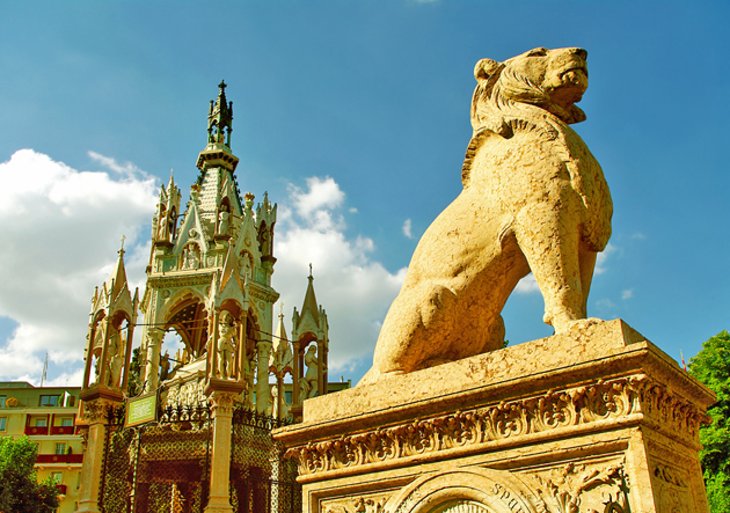
Along the north bank of the lake, the Rive Droite, the Quai du Mont-Blanc extends northeast from the bridge with a view of the Mont-Blanc mountain chain, a beautiful sight especially in the late afternoon of a clear day. At the landing stage in front of the Hôtel Beau Rivage, the Empress Elisabeth of Austria was assassinated by an Italian anarchist in 1898; she is remembered here by a monument.
Beyond the Quai du Mont-Blanc is the imposing Brunswick Monument, a mausoleum modeled on the Scaligeri tombs in Verona, built for Duke Karl II of Brunswick, who left his money to Geneva. Quai Wilson runs north past the large Palais Wilson in which the League of Nations met from 1925 until 1936.
Map of Attractions & Things to Do in Geneva
Geneva, Switzerland - Climate Chart
| Average minimum and maximum temperatures for Geneva, Switzerland in °C | |||||||||||
| J | F | M | A | M | J | J | A | S | O | N | D |
| 3 -2 | 6 -1 | 9 1 | 13 3 | 18 7 | 22 11 | 24 12 | 24 11 | 21 9 | 14 6 | 8 2 | 4 -1 |
| PlanetWare.com | |||||||||||
| Average monthly precipitation totals for Geneva, Switzerland in mm. | |||||||||||
| 74 | 74 | 74 | 61 | 71 | 84 | 66 | 79 | 79 | 74 | 89 | 81 |
| Average minimum and maximum temperatures for Geneva, Switzerland in °F | |||||||||||
| J | F | M | A | M | J | J | A | S | O | N | D |
| 38 28 | 42 30 | 49 33 | 56 38 | 64 45 | 71 51 | 76 53 | 75 52 | 69 48 | 57 42 | 46 35 | 40 30 |
| PlanetWare.com | |||||||||||
| Average monthly precipitation totals for Geneva, Switzerland in inches. | |||||||||||
| 2.9 | 2.9 | 2.9 | 2.4 | 2.8 | 3.3 | 2.6 | 3.1 | 3.1 | 2.9 | 3.5 | 3.2 |
More Related Articles on PlanetWare.com
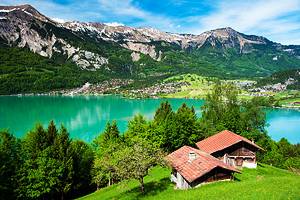
Where to Go near Geneva: Along with the many easy day trips from Geneva, several nearby cities and regions are worth exploring. Lausanne, with its excellent museums and historic sites, is a short boat or train ride away, and the Swiss capital of Bern and the mountain paradise around Interlaken are short train rides east. In this Jungfrau region, the villages of Mürren and Wengen are among the most charming towns in Europe.
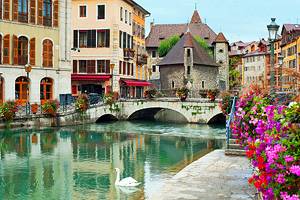
Places to Visit in France: Because Geneva sits right on the border with France, it is easy to reach several French cities, as well. Lyon is only two hours by train. Dijon, to the north in Burgundy, is only a little farther. Geneva is within easy reach of some of the best ski resorts in France. The French Alps are also filled with year-round attractions.
